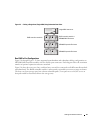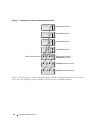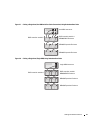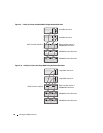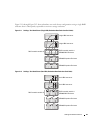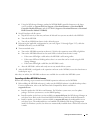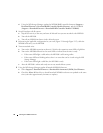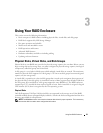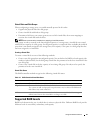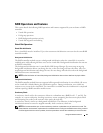
Using Your RAID Enclosure 33
Using Your RAID Enclosure
This section covers the following information:
• Basic concepts of a RAID solution including physical disks, virtual disks, and disk groups
• RAID levels supported by MD Storage Manager
• Hot spare operations and rebuilds
• Media errors and unreadable sectors
• RAID operations and features
• Advanced RAID features
• Hardware redundancy and failover including cabling
• Updating enclosure firmware
Physical Disks, Virtual Disks, and Disk Groups
Physical disks in your RAID array provide the physical storage capacity for your data. Before you can
begin writing data to the storage array, you must configure the physical storage capacity into logical
components, called disk groups and virtual disks.
A disk group is a set of physical disks upon which multiple virtual disks are created. The maximum
number of physical disks supported in a disk group is 30. You create disk groups from unconfigured
capacity on your storage array.
A virtual disk is a partition in a physical disk group that is made up of contiguous data segments of
the physical disks in the disk group. A virtual disk consists of data segments from all physical disks in
the disk group. All virtual disks in a disk group support the same RAID level. The RAID enclosure
supports up to 255 virtual disks that can be assigned to hosts. Each virtual disk is assigned a Logical
Unit Number (LUN) that is recognized by the host operating system.
Physical Disks
Only Dell-supported 3.0-Gbps SAS physical disks are supported in the storage array. If the RAID
controller module detects unsupported physical disks, it marks the disk as unsupported and the drive
becomes unavailable for all operations.
NOTE: The MD3000 enclosure must contain at least two disk drives for proper operation. This is necessary
because the disks are used to store configuration information.



